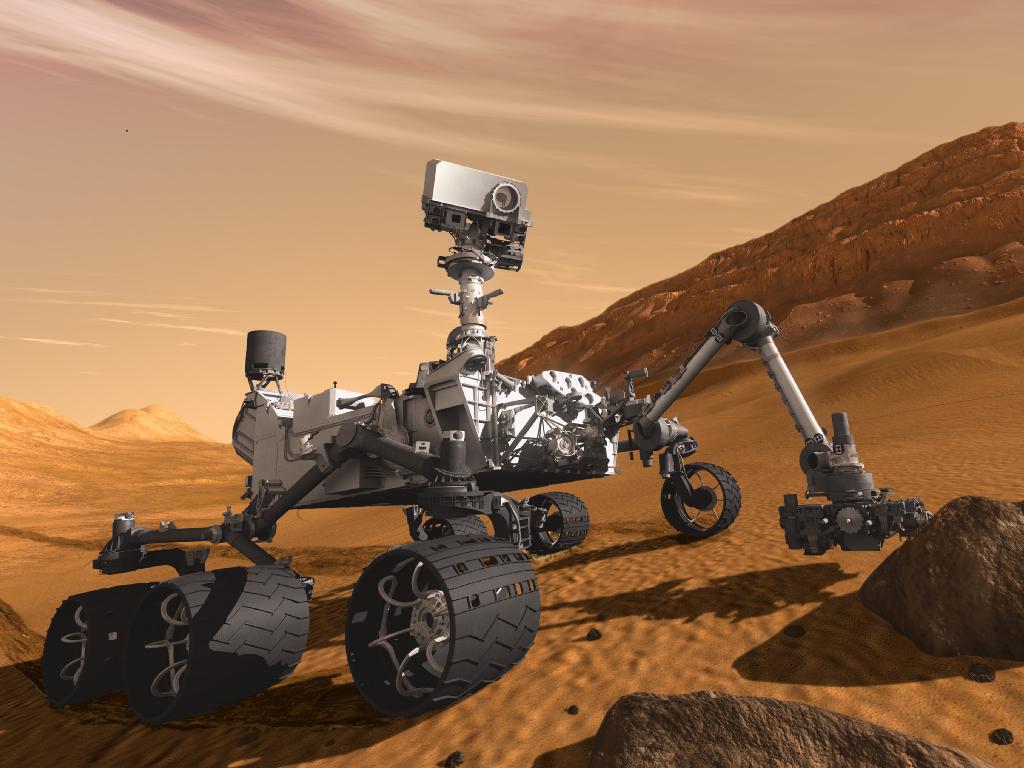NASA's Next Mars Rover Still Faces Big Challenges, Audit Reveals

This story was updated at 3:30 p.m. EDT.
NASA's repeatedly delayed and over-budget mission to send a huge rover to Mars still faces significant budget, timing and technology challenges before it can launch to the Red Planet in November, a project audit reveals.
A new report, released today (June 8) by NASA's independent Inspector General watchdog group, found that even more money may be needed to launch the $2.5 billion Mars Science Laboratory (MSL) mission to Mars this year. The mission is currently slated to launch in late November or December, NASA officials have said.
Overall, the report charged that project managers may have been overly optimistic in estimating the time necessary to solve the spacecraft's remaining challenges, as well as the funds that will be necessary to do so. [Vote: Where Should NASA New Mars Rover Land?]
"They did issue three specific recommendations, and they actually were ones that the project internally had already identified and were working on," Dave Lavery, NASA’s program executive for solar system exploration, told reporters today. "They were not things that were unexpected or are real big surprises for us. They are things that are normal and characteristic of large complex projects like these."
Signs of habitability
The Mars Science Laboratory, which NASA calls the Curiosity rover, is designed to look for signs that Mars is, or once was, habitable to life. It "is the most technologically challenging interplanetary rover ever designed," according to the report by Inspector General Paul Martin.
Breaking space news, the latest updates on rocket launches, skywatching events and more!
Curiosity's launch was already delayed two years in February 2009 because several critical components and instruments for the rover were delivered late by contractors. The snag boosted the project's development costs by 86 percent, from $969 million to the current $1.8 billion, and its total life-cycle costs by 56 percent, from $1.6 billion to the current $2.5 billion.
Because the orbits of Earth and Mars don't align often, NASA is trying furiously to meet the 2011 launch window, which opens Nov. 25. The rover team currently has a margin of roughly 20 extra days built into the schedule in case things take longer than planned to finish up before launch.
"We do feel very confident right now that given the work yet to go and the schedule that we have, that that amount of margin is sufficient," Lavery said. "We should be all set for a successful launch on the 25th of November." [Video: How Mars Rover Curiosity Will Land]
But if Curiosity doesn't launch in that window, the agency will have to wait 26 months — more than two years — for another launch window.
Such a delay would require a mission redesign costing another $570 million, the Inspector General's report found.
Making progress
So far, the Mars Science Laboratory team has made good progress overcoming most of the technical issues that caused the 2009 two-year launch delay.
"As of March 2011, all critical components and instruments have been installed on the rover and final preparation for shipment later this month to the Kennedy Space Center is proceeding," according to the NASA report.
However, there are still hurdles looming.
The Inspector's team found that the MSL scientists still need to resolve technical issues involving potential contamination of rock and soil samples, development of flight software, and fault protection.
And because of the delays to the project, more than three times the number of critical tasks than originally planned remain to be completed in the few months remaining until launch. As of February 2011, there were still about 1,200 reports of problems and failures that had not been resolved, the inspection found.
"If these reports are not resolved prior to launch, there is a possibility that an unknown risk could materialize and negatively affect mission success," according to the report.
Since then, many of the flags, called Project Failure Reports (PRFs) have been resolved, though some remain.
"We are putting a considerable amount of effort in getting all of those PRF reports closed out and taken care of prior to launch, and we are on a resolution path that should be able to take care of it," Lavery told SPACE.com.
The big bucks
Ultimately, more money may be needed to make this year's launch date.
"Although the MSL Project has received three budget increases since the 2009 launch delay including an infusion of $71 million in December 2010, in our judgment the Project may require additional funds to meet its November 2011 scheduled launch date," the report stated.
The inspection team recommended that more funds be funneled to the MSL project to make sure that outstanding issues are resolved and the rover meets its launch date, to prevent another even more costly delay.
"NASA agreed with our findings, concurred with our recommendations, and in its response described a series of planned actions," the Inspector General team wrote.
You can follow SPACE.com senior writer Clara Moskowitz on Twitter @ClaraMoskowitz. Follow SPACE.com @Spacedotcom or Facebook.

Clara Moskowitz is a science and space writer who joined the Space.com team in 2008 and served as Assistant Managing Editor from 2011 to 2013. Clara has a bachelor's degree in astronomy and physics from Wesleyan University, and a graduate certificate in science writing from the University of California, Santa Cruz. She covers everything from astronomy to human spaceflight and once aced a NASTAR suborbital spaceflight training program for space missions. Clara is currently Associate Editor of Scientific American. To see her latest project is, follow Clara on Twitter.
